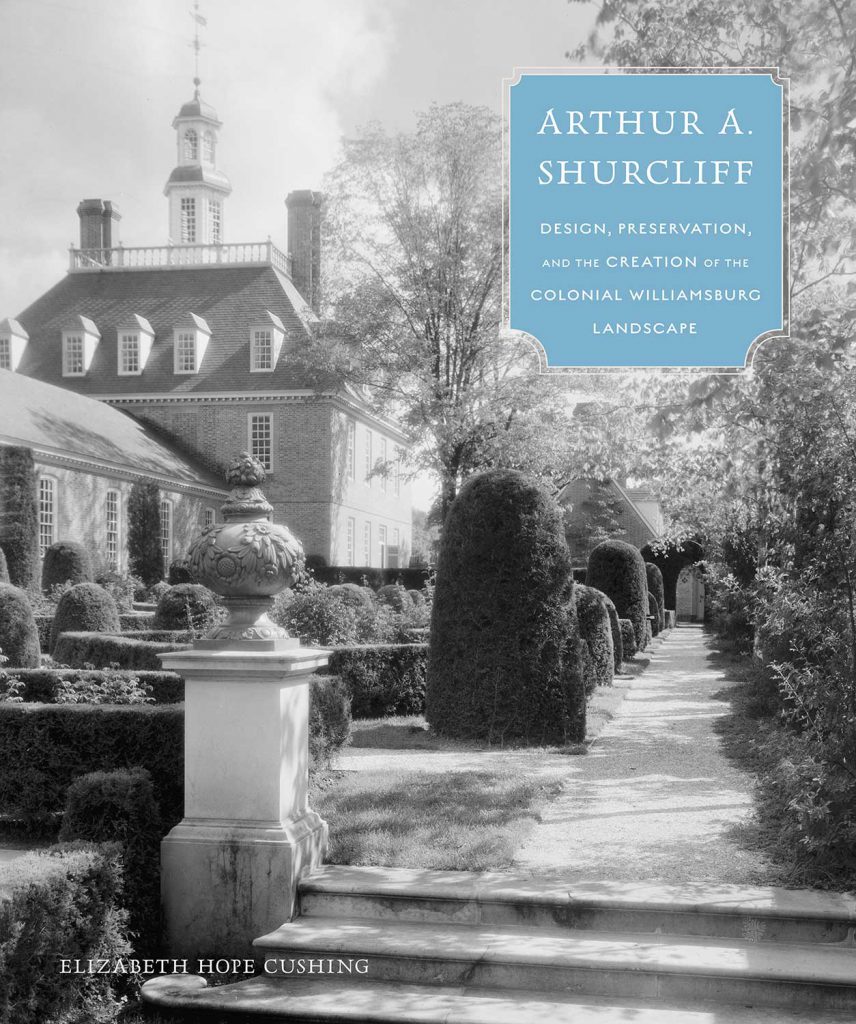Arthur A. Shurcliff
Design, Preservation, and the Creation of the Colonial Williamsburg Landscape
Elizabeth Hope Cushing
Library of American Landscape History
| ISBN: 978-1-952620-23-2 | 312 pages | 8.5 x 10 inches |
| $40.00 | Cloth | Published: 08/01/2014 |
| 150 b&w photos and drawings | |
A volume in the series Designing the American Park
In 1928, the landscape architect Arthur A. Shurcliff (1870–1957) began what became one of the most important examples of the American Colonial Revival landscape—Colonial Williamsburg, a project that stretched into the 1940s and included town and highway planning as well as residential and institutional gardens.
Shurcliff graduated from MIT with a degree in engineering in 1894 but was drawn to landscape architecture. Because no formal programs existed at the time, on the advice of Frederick Law Olmsted and with the aid of his mentor, Charles Eliot, he went on to piece together courses at Harvard College, the Lawrence Scientific School, and the Bussey Institute, earning a second BS two years later. He then spent eight years working in the Olmsted office, acquiring a broad and sophisticated knowledge of the profession.
Opening his own practice in 1904, Shurcliff emphasized his expertise in town planning, preparing, through the years, plans for towns surrounding Boston and for several industrial communities. He designed recreational spaces in and around Boston, including significant aspects of the Franklin Park Zoo and the Charles River Esplanade, one of Shurcliff’s major projects in the region.
In Cushing’s richly illustrated biography, we see how Shurcliff’s early years in Boston, his training, his early design and planning work, and his experience creating an Arts and Crafts style summer compound in Ipswich led to Colonial Williamsburg, his largest and most significant contribution to American landscape architecture.
“Arthur Shurcliff was a pivotal figure in both municipal park design and landscape preservation. In Boston he personally shaped the transition of the Olmsted park system to the twentieth-century public landscape. In historic preservation, he pioneered early landscape preservation efforts, culminating in his remarkable and profoundly influential work in Williamsburg, begun when he was in his sixties.”
“This is a very good piece of work and it will be a singularly important contribution to the literature concerning what I believe is still our least understood period of urban landscape architecture.”
About the Author
Elizabeth Hope Cushing
Elizabeth Hope Cushing is a practicing landscape historian who consults, writes, and lectures on landscape matters. She has written cultural landscape history reports for the Taft Art Museum in Cincinnati, The National Park Service, the Department of Conservation and Recreation of the Commonwealth of Massachusetts, and other institutions and agencies. Her contributor credits include Pioneers of American Landscape Design, Design with Culture: Claiming America’s Landscape Heritage, Shaping the American Landscape, and Drawing Toward Home.
